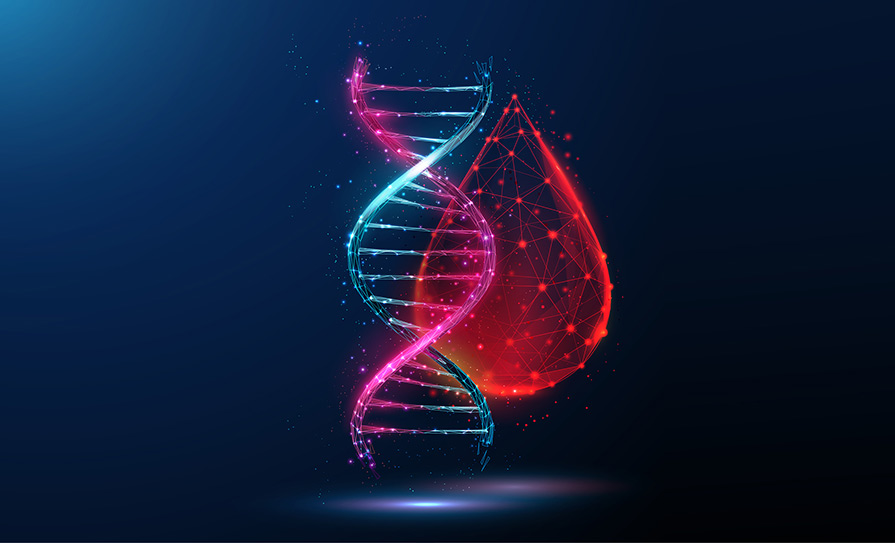Two of Ireland’s top haematological cancer researchers, Prof Owen Smith and Prof Jonathan Bond, speak to Priscilla Lynch about the latest breakthroughs in leukaemia treatment and research, what their hopes are for the future, and what new treatments will be available in Ireland soon
Prof Owen Smith CBE is a principal investigator at the National Children’s Research Centre (NCRC), Crumlin, and Systems Biology Ireland, University College Dublin (UCD), and is leading the HSE’s development of specific adolescent and young adult (AYA) cancer services and pathways. His two main areas of research have focused on evidence-based, randomised, peer-reviewed haemato-oncology clinical trials, with a focus on clinical questions within all domains of paediatric and adolescent blood and cancer, and the elucidation of the relationship between the protein C activation pathway and systemic inflammatory response sepsis syndromes.
Prof Jonathan Bond is the UCD Brendan McGonnell Professor of Paediatric Molecular Haemato-oncology. His professorship was developed to advance research into paediatric and adolescent haematological cancers, with the aim of improving survival rates for those affected. Prof Bond returned to Ireland in 2018 following the completion of a research fellowship at the Hôpital Necker-Enfants Malades, Paris to lead the new collaborative paediatric leukaemia research programme between Our lady’s Children’s Hospital, Crumlin, and Systems Biology Ireland at UCD. Prof Bond’s current key research aim is to find more precise and effective cures and stratification for paediatric leukaemia patients, based on understanding the mechanism of how the leukaemia comes about.
Both professors are supported in their cancer research by funding from the Children’s Medical Research Foundation (CMRF) Crumlin, which provides fund-raising for the NCRC. Paediatric research is an extremely underfunded research area in Ireland — only around 2 per cent of the medical research in Ireland is for paediatric research, according to CMRF Crumlin.
Leukaemia in children
Child and young adolescent haematological cancers account for approximately 40 per cent of all cancers in children up to the age of 16 years. In Ireland, there are on average around 210 children a year who are diagnosed with cancer. Around one-third of those have acute leukaemia, most commonly acute lymphoblastic leukaemia (ALL).
Up until the 1950s, leukaemia was a fatal diagnosis. “Now, we can cure about 90 per cent of children with this cancer. Research is vital because we can’t progress without it. Every single advancement so far is thanks to research and every single advancement we will make in the future will be because of research,” Prof Bond stated.
“Yes, we’re curing over 90 per cent of children with ALL now,” Prof Smith added. “But we’re doing this at a price, and that price is usually long-term toxicities for some of these children.”
He said that for the past 70 years, real efforts in curing childhood cancers have focused on the area of acute leukaemia “because that’s the most accessible form of cancer that we have”.
“If you stick a needle into a vein, you can get a cancer biopsy, as opposed to going into a solid tumour, which takes more time and is more invasive.
“I’m hugely interested in this area of research for two reasons — one is because we don’t cure all of these children; we cure approximately 90 per cent and that means that unfortunately, around 10 per cent are not cured, so I’m interested in looking at ways to find treatments and cures for that other 10 per cent so that we can cure 100 per cent of these children.
“Secondly, the children that we do cure suffer the ravages of the treatments that we use, like long-term toxicity, especially in the group of the young adolescents where they are a bit more prone to the side-effects, like bone disease secondary to steroids, and heart disease, like cardiomyopathy, secondary to anthracyclines.”
The current treatment regimen for leukaemia is heavily chemotherapy-based (also steroids, stem cell transplants and biological therapies), using drugs developed before 1975, noted Prof Smith. “We’ve really maxed-out the benefits of using these drugs in combination, to get to the 90 per cent cure rates, and the 10 per cent we currently cannot cure either suffer relapses or are primary refractory.”
Toxicity
Most children with leukaemia now do quite well, and generally, the side-effects are better than they were a couple of years ago, said Prof Bond. “We’re better at dealing with the side-effects and predicting how someone will react to treatment. There are still some side-effects that are very debilitating. For example, steroids can cause problems to the blood supply of the bones; particularly, adolescents can get something called osteonecrosis, which means ‘bone death’. This means that sometimes teenagers can end up with hip replacements. Treatments like steroids do work, but they are not without their consequences or toxicity. Chemotherapy is a scattergun approach to curing the child of the cancer — you obviously want to kill the cancer, but it has a negative aftermath for the child. It’s like using a sledgehammer to crack a nut. I want to target the treatment to just eliminate the leukaemia cell, without harming the child.”
“Also, not everyone experiences toxicity, which is an interesting observation, so the question is, who are they and can we identify them up-front? This is important, as those who do suffer toxicity can experience significant morbidity and mortality,” Prof Smith commented to the Medical Independent.
The key to improving survival rates even further and reducing treatment-related side-effects is unlocking patient genomes and identifying the genetic determinants, ie biomarkers, that indicate what medications individual patients will respond to or potentially react badly to, ie, cyclophosphamide or dexamethasone, he said. “So it is really about precisely tailoring the treatments to the individual — precision cancer care for children and adolescents and young adults. We’re not going to be treating these patients in big cohorts anymore.”
Furthermore, more is now known about the molecular biology of childhood leukaemia than ever before, and huge amounts of genetic transcriptional and epigenetic information continue to be generated. It is important that these data are interrogated intelligently, and it is incumbent on clinicians and biologists to help drive this analysis, contended Prof Bond. His group is using systems biology approaches to investigate gene and protein networks in paediatric leukaemia, with particular reference to normal haematopoiesis.
“The computer model allows us to do a lot of experiments before going into the lab, and can help us to target unexpected variations,” Prof Bond explained.
“This will allow us to identify what treatments will be better, which will ultimately improve the survival and reduce the toxicity.”
Immunotherapy
Like so many other cancers, the latest most promising area of treatment for refractory/relapsed leukaemia is immunotherapy; with the emergence of Bi-specific T-cell engagers (BiTEs), a class of artificial bi-specific monoclonal antibodies including alemtuzumab and inotuzumab, and Chimeric Antigen Receptor (CAR) T-cell therapy.
Prof Smith and Prof Bond hope that CAR T-cell therapy will be available in Ireland later this year for their leukaemia patients.
“In practice, [with CAR T-cell therapy] you take out the patient’s white blood cells, you process them and make them express an antibody for the leukaemia cell. You then put them back into the patients and this has had really amazing results, particularly in children who have gone into remission. This form of treatment [tisagenlecleucel]now has approval from the European Board of Medicine, so it should be used in Ireland very soon,” Prof Bond confirmed.
“There is only going to be a small number of patients using CAR T-cell therapy and we still don’t know if it is going to be the cure or a bridge to a cure, which is an allogeneic [healthy donor] stem cell transplant that we do already, but the great thing about some of these immunotherapy approaches is that they really eliminate a lot of the acute toxicity. So you can imagine, in a child who has relapsed or who is refractory that you have thrown the kitchen sink at, these children are very much in line with significant toxicity so we’d like to remove that toxicity, as going into a transplant, you want the patient to be as fit as possible, because if they are not, they can develop transplant-related morbidity and mortality, which can result in death. So this is a much cleaner way of cleaning up that 10 per cent of patients who don’t do well,” Prof Smith commented.
Clinical trials
Traditionally, paediatric cancer patients are the worst served when it comes to access to clinical trials for the latest treatments/approaches.
However, all children diagnosed with ALL in Ireland have been on a clinical trial (UKALL) for the last five years, Prof Smith said. The UKALL trial, which has now closed, recruited over 5,000 patients across the UK and Ireland, according to Prof Smith, with the aim of examining if changing the standard treatment for children and young people with ALL or lymphoblastic lymphoma (LBL) will reduce side-effects and help stop their disease from relapsing.
“The next trial is the ALLtogether trial, which is a pan-European trial, which will recruit far more patients and outside of the paediatric age group, right up to 44 years of age. We’ve believed for a long time now, [for] 10-to-15 years, that young adults on ALL treatment do far better on paediatric approaches to ALL, which has been shown in previous trials too… and this trial will incorporate molecular screening and CAR T-cell immunological approaches, so we are at the cusp now of something really spectacular.”
So it is an exciting time to be working in the field of paediatric leukaemia research and treatment, concluded Prof Smith. “Back in 1966, when my cousin died of leukaemia, everyone was put in the back room, put on a drip and given opiates or morphine, and they were dead within three-to-six weeks.
“The majority of these kids are now cured, with no issues in terms of fertility, and go on to have their own kids — all in the space of 40, 50 years. It is unbelievable.”













Leave a Reply
You must be logged in to post a comment.